1000000
Keywords
Regions
Contact for the resource
Provided by
Formats
Representation types
Update frequencies
status
Scale
-
Chapters: Le Milieu Naturel, Les Sols, Les Grandes Regions, Conclusions.
-
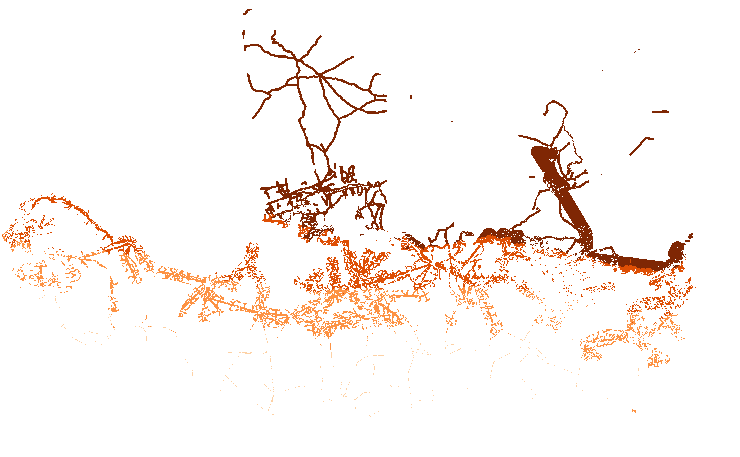
This dataset was generated using GIS methods to estimate technical potential for solar electricity generation in rural areas of ECOWAS region. Technical potential of solar generation in a chosen area may be defined as the amount of the total yearly solar radiation available in that area, taking into account existing geographical constraints, ("suitability maps") that can be converted into electricity given the available solar power technologies. Technical potentials in GWh per year per cell at 1km resolution have been calculated by multiplying DNI (or GHI) for the technical parameters (performance, efficiency) related to CSP or PV, and for the available area. The available area was estimated using for: - CSP (grid connected) only cells with land suitability score > 302 (5% of total cells) - PV (grid connected) only cells with land suitability score > 299 (5% of total cells) - PV (off grid) only cells with land suitability score > 255 (5% of total cells)
-
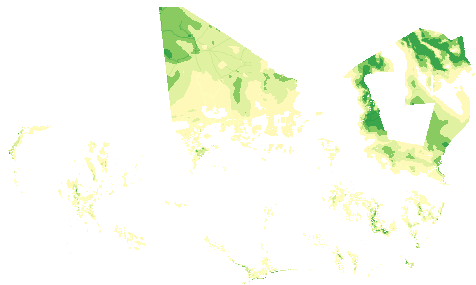
The suitability maps, contain information on locations suitable for installation of the respective wind electricity generation systems in accordance with the restrictive criteria adopted. Locations are evaluated according to their suitability for onshore wind systems deployment according to topographical, legal, and social constraints, and well as factors that could facilitate or impede wind generation development. The present study focus exclusively on land suitability for the installation of onshore wind turbine and wind farm. The study is conducted on a regional scale. The results can be used for identification of potential areas of interest for solar generation deployment, and as a support for integration between electricity grid expansion and off-grid electrification policies. Off-grid installations - ecological scenario: Installation NOT connected to the electrical grid, environmental impacts minimized
-

The suitability maps, contain information on locations suitable for installation of the respective wind electricity generation systems in accordance with the restrictive criteria adopted. Locations are evaluated according to their suitability for onshore wind systems deployment according to topographical, legal, and social constraints, and well as factors that could facilitate or impede wind generation development. The present study focus exclusively on land suitability for the installation of onshore wind turbine and wind farm. The study is conducted on a regional scale. The results can be used for identification of potential areas of interest for solar generation deployment, and as a support for integration between electricity grid expansion and off-grid electrification policies. Off-grid installations - practical scenario: Installation NOT connected to the electrical grid, ease of installation maximized
-
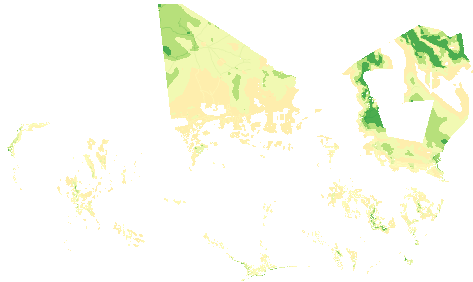
The suitability maps, contain information on locations suitable for installation of the respective wind electricity generation systems in accordance with the restrictive criteria adopted. Locations are evaluated according to their suitability for onshore wind systems deployment according to topographical, legal, and social constraints, and well as factors that could facilitate or impede wind generation development. The present study focus exclusively on land suitability for the installation of onshore wind turbine and wind farm. The study is conducted on a regional scale. The results can be used for identification of potential areas of interest for solar generation deployment, and as a support for integration between electricity grid expansion and off-grid electrification policies. Grid connected installations - ecological scenario: Installation connected to the electrical grid, environmental impacts minimized
-
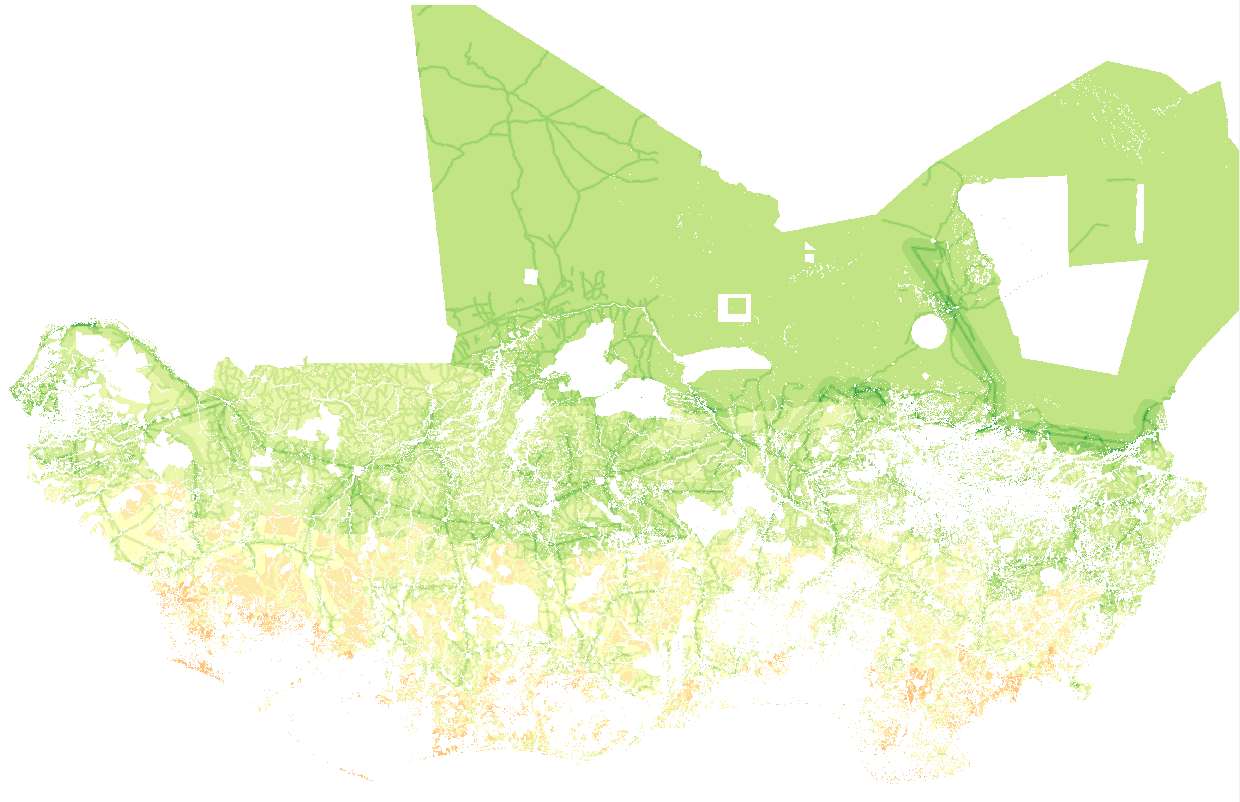
The suitability maps, contain information on locations suitable for installation of the respective solar systems in accordance with the restrictive criteria adopted. Locations are evaluated according to their suitability for solar systems deployment according to topographical, legal, and social constraints, as well as factors that could facilitate or impede solar generation development. The study is conducted on a regional scale. The results can be used for identification of potential areas of interest for solar generation deployment, and as a support for integration between electricity grid expansion and off-grid electrification policies.
-

This dataset was generated using GIS methods to estimate technical potential for solar electricity generation in rural areas of ECOWAS region. Technical potential of solar generation in a chosen area may be defined as the amount of the total yearly solar radiation available in that area, taking into account existing geographical constraints, ("suitability maps") that can be converted into electricity given the available solar power technologies. Technical potentials in GWh per year per cell at 1km resolution have been calculated by multiplying DNI (or GHI) for the technical parameters (performance, efficiency) related to CSP or PV, and for the available area. The available area was estimated using for: - CSP (grid connected) only cells with land suitability score > 302 (5% of total cells) - PV (grid connected) only cells with land suitability score > 299 (5% of total cells) - PV (off grid) only cells with land suitability score > 255 (5% of total cells)
-
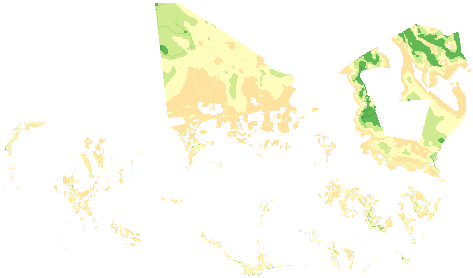
The suitability maps, contain information on locations suitable for installation of the respective wind electricity generation systems in accordance with the restrictive criteria adopted. Locations are evaluated according to their suitability for onshore wind systems deployment according to topographical, legal, and social constraints, and well as factors that could facilitate or impede wind generation development. The present study focus exclusively on land suitability for the installation of onshore wind turbine and wind farm. The study is conducted on a regional scale. The results can be used for identification of potential areas of interest for solar generation deployment, and as a support for integration between electricity grid expansion and off-grid electrification policies. Grid connected installations - practical scenario: Installation connected to the electrical grid, ease of installation maximized
-

Dataset includes an estimation of the demand for electricity from households onto a geographic grid at 1km x 1km of spatial resolution. Dataset mainly focus on the demand for electricity of urban residential, commercial, and small industries, according to the WAPP 2013 (Miketa, A. and Merven, B., 2013) subdivision. Dataset does not include demand from heavy industry (e.g. mining), which connects to generation at a high voltage and generally requires less transmission and no distribution infrastructure. Taking that into consideration, in rural areas the electricity demand can be considered closely related to the number of inhabitants, the principal dis-aggregation algorithm, that estimates the electricity demand for each cell (x,y) of the geographic grid is based on:. Electricity demand(x,y) = electricity demand(capita) * number people(x,y) where Electricity demand(x,y) corresponds to the demand for the cell at the x,y position, the electricity demand per capita is calculated at national level according to IRENA 2013 data, and the number of people (x,y) corresponds to the people living in the cell at the x,y position Data is expressed as electricity demand in MWh per year per cell for the year 2015
-
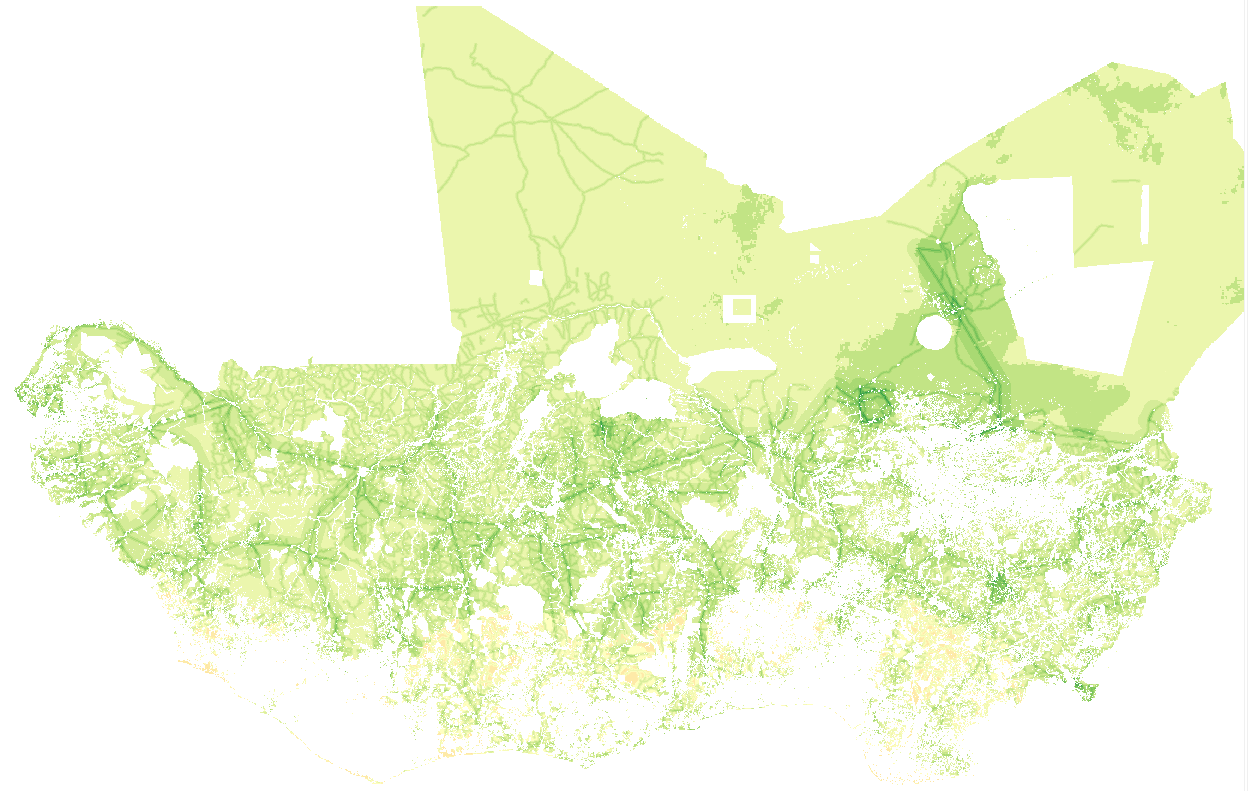
The suitability maps, contain information on locations suitable for installation of the respective solar systems in accordance with the restrictive criteria adopted. Locations are evaluated according to their suitability for solar systems deployment according to topographical, legal, and social constraints, as well as factors that could facilitate or impede solar generation development. The study is conducted on a regional scale. The results can be used for identification of potential areas of interest for solar generation deployment, and as a support for integration between electricity grid expansion and off-grid electrification policies.
 PAUWES Data Portal
PAUWES Data Portal